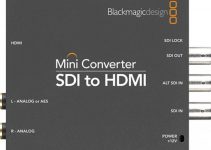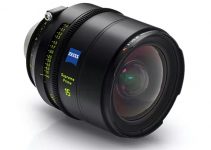As a rule, the sun can be a very useful source of light when filming daytime exteriors. Unfortunately, that’s not the case when you’re trying to nail down your exposure while shooting indoors in mixed light conditions with a window that happens to be in the frame. In this case, the area with the naturally emitted light could be easily blown out causing clipping in the highlights of your image, as a result of the prevailing intensity of the sunlight.
In case you’re wondering how you can properly expose for a subject in a similar situation without using a high-end cinema camera or any other piece of expensive equipment, Harv of Harv Video/Audio Stuff provides some fantastic practical tips and tricks that should help you to cope with even the most challenging high-contrast scenes.
Harv’s first piece of advice is to film using a log picture profile that presumably should give you a higher dynamic range to work with. Then in post, depending on how bright the window looks once you’ve applied the picture profile, you might be able just to add a color grade to your image and end up with a more balanced shot than just having an overexposed window in the middle of the frame.
Secondly, if you’re on a budget but still want to fine-tune your image, you could use masks/rotoscoping in your compositing software of choice such as Adobe After Effects. Simply try to isolate an area of your shot with the masking tool and then balance the image further using the Brightness and Contrast filter to tweak the area to your liking.
Keep in mind, though, that this technique can become quite tedious and overwhelming in certain situations. In fact, if your subject or shot is moving, you may have to deal with motion tracking to ensure that you’ll be able to sell the final effect.
In addition to all the techniques above, you can try adding a bunch of lights to your scene. If you have enough light sources hitting your subject, you could turn down the exposure in your camera and expose for your subject while using your primary source of light.
Keep in mind that this workflow can also be a bit tricky to pull off since the lights you use for your subject need to match the practical lights in your scene. Make sure to test out different lighting configurations and see which works best for you.
Another technique you could use to shoot in front of a bright window is by turning down the amount of light entering the room. You can do so, by placing ND Filter Sheets onto the glass of the window itself. These work the same way ND filters are used on cameras as they reduce the amount of light coming through the glass. Prices and brands may vary, but Harv recommends those made by Lee Filters.
If you combine the use of a log picture profile, lighting, ND filters, and (optionally) the post-production masking all together, you should be able to get a more cinematic look with no blown out highlights, balanced midtones, and properly exposed shadows just as shown in the example above.
[source: Harv Video/Audio Stuff]
Disclaimer: As an Amazon Associate partner and participant in B&H and Adorama Affiliate programmes, we earn a small comission from each purchase made through the affiliate links listed above at no additional cost to you.
Claim your copy of DAVINCI RESOLVE - SIMPLIFIED COURSE with 50% off! Get Instant Access!






very nice tips